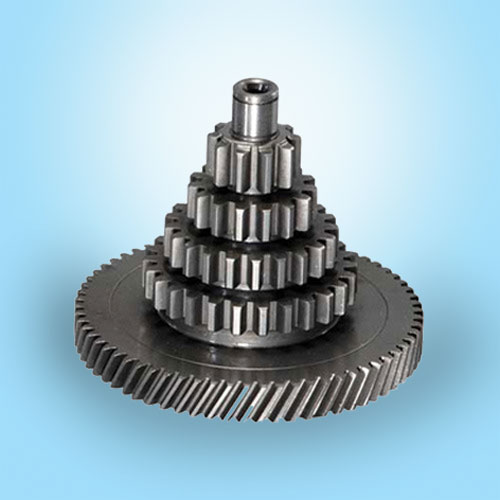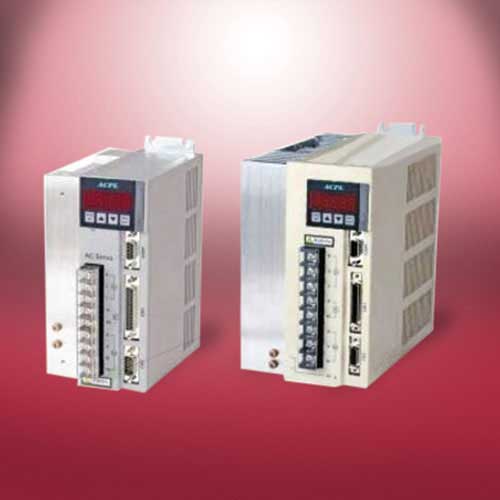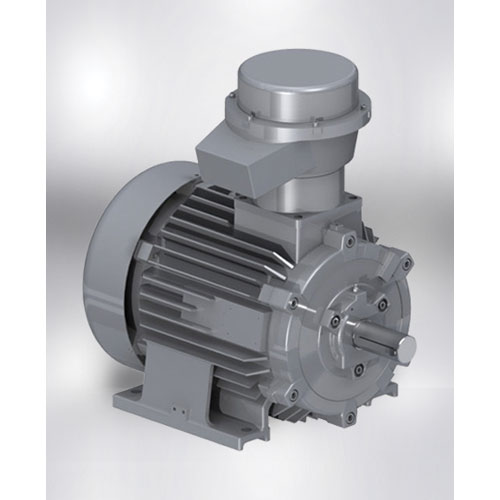Schedule a Call Back
Actuator Sensor-Interface from Siemens for Intelligent Cabling
 Industry News
Industry News- May 07,12
Actuator Sensor-Interface from Siemens offers faster commissioning, shorter downtime, and easy integration with higher automation systems
In the yester years, there was no scarcity of materials like copper, and iron. Materials that have also come to be termed as precious metals. In fact, the supply of such materials was more than the demand. Labour too was available in abundance. With the passage of time, labour cost has gone up. Material cost has also increased. Both have an effect on the production, and product cost. There is a definite cost increase. This could work contrary to the increasing pressure to reduce the prices of the products due to the increasing competition. Manufacturers are therefore on the lookout for reducing the cost of production and in-turn reduce the price of their products. Automation is the best way to achieve this.
Centralised System
The introduction of automation was a revolution in itself. Automation involves exchange of data from across the field to a central control unit. The data exchanged can be of various types ranging from system data, process parameters, analogue data or binary data. Also the nature of exchange of these data varies and can be cyclic or acyclic. Consider a conventionally wired conveyor system for example. Along the conveyor line, there are sensors like limit switches, proximity sensors, etc., which give input to the PLC about the materials being conveyed. Based on the requirement, the PLC gives output to the contactors to switch off or switch on the conveyor. The switching action can also be done locally by means of actuators like push buttons, E-stop button, etc.
Conventionally, each of the actuator/sensor along the conveyor was connected by hard-wire to the marshalling tier. From the marshalling tier, the inputs and outputs are connected to the PLC by means of a multi-core cable. This was referred to as 'centralised control' where in all the data from the entire plant would be wired to the PLC located at certain location in the plant. The following drawbacks were encountered:
| Drawback with this System | Impact for Customer |
| More number of wires | Increased cabling costs |
| Large control cabinets | Higher cost of panels |
| Enormous time involved in wiring | Delayed start-up & commissioning |
| Considerable source for errors | Frequent plant break downs |
| Difficulty in fault diagnosis | Higher downtime |
These drawbacks led to the development of the decentralised control systems - which means distributing intelligence in the field. To make communication faster and the automation hardware simpler, field bus concepts came into existence. Field bus technology involves the use of a common protocol for data exchange in a serial way between the central control unit and the field devices thereby eliminating the need of traditional hardwiring. In this system, only the hardware or the hardware as well as the software can be decentralised. Decentralised I/O modules are kept on the field and the sensors and actuators are wired to these. These remote I/O modules communicate to the PLC by bus-systems or communication protocols like PROFIBUS/MODBUS/AS-i, etc.
Decentralised System (System using AS-i)
Actuator sensor interface is a bus system designed as an interface (connection media) for all simple binary On/Off field devices (pushbuttons, limit switches, proximity sensors, valves, contactor coils) to the higher level of automation. In this communication bus system or protocol, the hardware is only decentralised. In this system, the basic components at the field level are AS-i master, AS-i slaves (or I/O modules) and the AS-i power supply. AS-i, slave modules (I/O Module selected based on the number and type of inputs and outputs) are mounted near the sensor cluster. A single AS-i cable runs through the slaves, to the AS-i master and power supply. The AS-i master in turn is connected to the PLC. Thus, AS-i replaces the cable tree at the lowest level of automation in the industry where conventional hardwiring/field bus tend to be too complicated, too slow or too expensive. The result is an immense reduction in wiring -- to one instead of a thousand cables!
What is AS-i?
AS-i is an open and manufacturer-independent bus system transmitting process- and machine-level digital/analog signals and safety-oriented signals to the PLC. It's a universal interface between actuators and sensors on the field level to the superior control level of PROFIBUS/Ethernet/others. AS-I is basically a Master-Slave system. Master-Slave refers to the method the field-bus uses to transfer information. The master is responsible for the operations of the bus system. One AS-I master can have a maximum of 62 slaves of 4I/4O each (according to AS-I specification Ver 3.0) over a length of 100 m (expandable up to 600 m with repeaters and other accessories).
AS-interface was conceived as a single master system with cyclic polling. This means that there is only one control module (master) in the AS-interface network which polls the data of the other nodes (slaves) at precisely defined intervals. Up to four useable input bits and four useable output bits are exchanged between a slave and the master in any one cycle. AS-interface has been optimised for volumes of data that correspond precisely to the requirements of the lowest field level
The basic components in an AS-i system consist of a master, slaves, power supply and the AS-i cable.
AS-i Master - It provides an interface between the slaves and the PLC. The AS-interface master forms the connection to higher level controls. It independently organises the data traffic on the AS-interface line and is responsible for parameter settings, monitoring and diagnostic functions.
AS-i Slaves - The AS-i slaves can either be AS-i enabled valves, push button stations, limit switches etc or can be AS-i enabled I/O cards on which the actuators and sensors are connected.
AS-interface slaves include the AS-i electronics. The I/O cards can either be IP20 (can be installed in a control cabinet) or IP67 modules (that are directly used in the field).
AS-i Power Supply - This is a special 30V DC power supply, which decouples the power and the data signal. The power supply units generate a controlled DC voltage of 24 or 30 V with a high degree of stability and low residual ripple. They supply the network's electronics, i.e. the AS-i modules and the master as well as the connected sensors. AS-interface power supply units generate a nominal voltage of 30 V DC.
AS-i Cable - The AS-i cable has to meet the specifications laid down in the AS-i standard specifications. The yellow, flat cable is characteristic for the AS-interface. Data and power for the sensors are transferred along this cable. A second, black flat cable is used to supply the actuators with 24 V. Both of these cables use the piercing technology, specifically developed for AS-i. This allows every node to be simply snapped on to the two profiled cables at any location - also with the correct polarity.
In case of the IP67 AS-i slaves, the wiring is done by "piercing technology". In this case, the geometry of the cable is such that polarity reversal is not possible and hence errors during installation are minimized. The trapezoidal profile with the profiled lug ensures a high degree of protection against polarity reversal (mechanical code). In case of IP20 modules, regular copper wires can be used. The IP20 modules have removable terminals, which makes the wiring easy.
Benefits of AS-i
One cable instead of a thousand ones
In the conventional system, the entire machine is surrounded by cables, which increase the hassles in maintenance. By AS-i, maintenance is hassle-free.
- Less wiring implies less cost - cabling, wiring, maintenance, etc.
- No wiring faults. Confusion of terminals excluded.
Short Downtimes Thanks to Fast Replacement
The IP67 modules enable quick installation. The slaves in an AS-i network hooks on to the cable without any trouble due to the piercing technology of the cables. Hot-replacement, i.e., replacement of the modules without shutting down of the system is possible.
Contact needles pierce through the cable insulation and make secure contact with the copper conductor. When the needles are pulled out again to remove a slave, the cable's self-healing capability ensures that the holes close automatically, providing full insulation again (in the case of EPDM cables).
Less Commissioning and Configuration Time
The slaves can be pre-addressed using the addressing tool. The master can be parameterised easily without putting it on-line.
Less Maintenance Time
In case of any failure, the diagnostics are fast. The replacements of the salves are easy due to the hot-replacement feature
Easier Diagnostics
Due to diagnostics available at various levels the down-time of the plant reduces. AS-i provides diagnostic information at the device level by means of LEDs. Diagnostic information are also available on the AS-i Master. It can also be configured to get diagnostic information on PLC/ SCADA/ HMI panels.
Expandability
The system is flexible and hence is expandable very easily with minimal downtime. A shut-down of the plant is not required for a long time due to the off-line configurability, hot-replacement, etc.
AS-i as Part of Totally Integrated Automation
The AS-i association was founded in 1991 and since then, the specifications for AS-i has undergone continuous improvement. Presently, AS-i adheres to specification version 3.0. Some of the features of AS-i specification Ver 3.0 are, Binary I/O nodes supporting A/B addressing with 4 Inputs and 4 Outputs. Binary I/O nodes supporting A/B addressing with 8 Inputs and 8 Outputs. Integrated safety (AS-i safe), and improved diagnostics.
While all AS-interface products correspond to Euro Norm EN 50295, and World Standard IEC 62026-2, all certified AS-i products (recognisable by the AS-interface shadow logo and the corresponding test number) are fully compatible with each other independent of the manufacturer and are interchangeable.
AS-i forms part of the TIA pyramid (Totally Integrated Automation - the hierarchy of the communication protocols available.) AS-i is at the lowest control level, where it is used to interlink process-related devices like sensors, actuators, etc., with one-another and to the next higher automation level.
The next level is either the field-bus level like Profibus/Modbus, etc., followed by the operating control level like Industrial Ethernet.Being the lowest level of automation, AS-i is not designed to handle large volumes of data. The structure and length of the data frame is fixed. Up to four useable input bits and four useable output bits are exchanged between a slave and the master in any one cycle. At this level, however, there are a high number of connected devices all with the requirement for real time/deterministic capability.
From AS-i, gateways to EtherNet/IPTM, PROFINET, Modbus/TCP and others are available. With the new and continuously improving capabilities, AS-interface is the ideal partner network for any of the currently available Ethernet based industrial protocols. The future of the communication networks are seen as a 2-level hierarchy comprising of Field bus like AS-i and then the Ethernet based protocols.
Related Products

Cluster Gears
Trishla
Gear Industries is engaged in manufacture and supply of a wide range of cluster
gears.

Servo Drives, Fully Digital
Bristol
Industrial Electronics offers optimum quality, fully digital servo drives.















